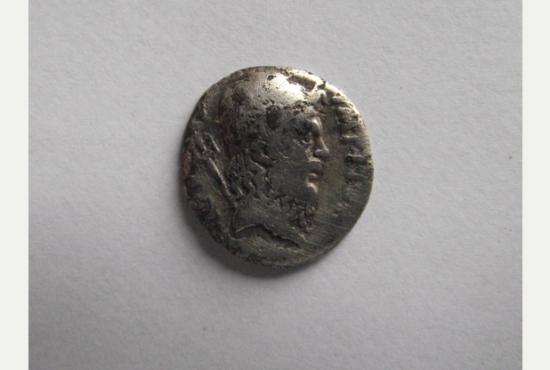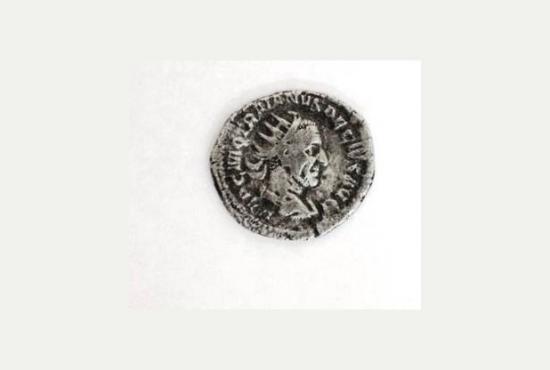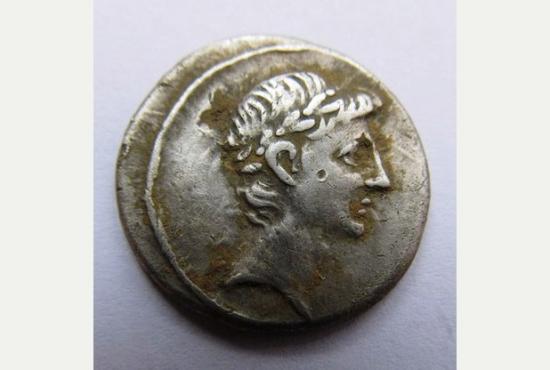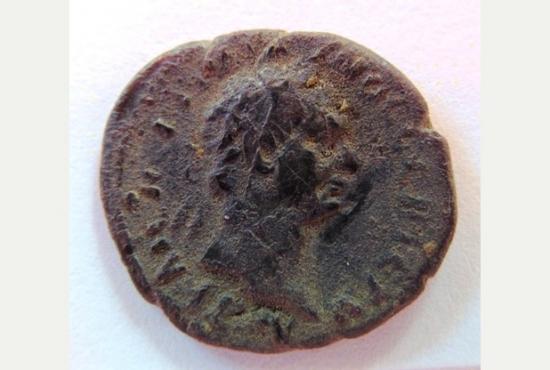A fuller picture of Roman, Bronze Age and Celtic times in Surrey is emerging thanks to the recording of finds unearthed in recent years.
Surrey’s finds liaison officer, archaeologist David Williams, described some of the treasures uncovered in the past year when he addressed a metal detecting club in Reigate on March 3. But he also said that a Roman brooch reported to him was of dubious provenance and explained why he had come to that conclusion.
At the March meeting of the Weald and Downland Metal Detecting Club Mr Williams firstly described a collection of Middle Bronze Age objects found on Friday, May 17, 2013 during building work at the former Hautboy Inn in Ockham, a short distance from junction 10 of the M25 near Wisley and Ripley. The hoard was found following the demolition of a modern extension to the mid-Victorian brick-built public house and lay within a few inches of an exterior wall of the earlier building. The collection of axes, and wrist rings came to light during the installation of a pipe running from the building. Such wrist rings have only previously been discovered in Sussex, chiefly near Brighton. Mr Williams said it was most fortunate that the hoard survived the original construction of the inn and the various pipelines that ran alongside. Observation of the building work on the following Monday, by which time the hoard had been removed, suggested that it had lain in a shallow pit cut into the natural sandy subsoil. A fragment of the basal angle of what appears to have been a bucket urn was recovered from the edge of the pit. Mr Williams said that in view of the condition of the sherd it is possible that the rest of the vessel was discarded unrecognised during recovery.The hoard comprises six unlooped palstave axes of which four are ribbed examples and two plain; two “Sussex Loop” bracelets; and two spiral finger rings. Both the loops and the rings are angular in section and both are decorated with many short grooves running across one of the angles. All the objects in the hoard are encrusted with corrosion although each object has patches free of corrosion. The hoard dates to the Middle Bronze Age and can be compared with a similar hoard found near Lewes, Sussex, in 2011 for which a date of c1400-1250BC has been proposed. However that hoard contained a much wider range of objects including gold discs of French origin and spiral-twisted bronze torcs, as well as five Sussex Loops, eight spiral rings and three palstaves. Sussex Loops are bracelets formed from a single bar of square-section copper alloy, the terminals flattened and curled. Their distribution has previously been centred on the Brighton area, hence their name, making the Ockham hoard the first find of such loops from outside Sussex by a considerable margin. This, said Mr Williams, coupled with the general rarity of Middle Bronze Age hoards, makes the Ockham hoard a significant find. “It is to the credit of the developer and the contractors at the Hautboy Inn site that the hoard was recovered and reported promptly. It is now at the British Museum where it is awaiting consideration under the Treasure Act,” he said. The hoard is going through the treasure process and Mr Williams said he hoped that the find would eventually be acquired by Guildford Museum.
Mr Williams showed slides of some of the other finds made in Surrey over the past year and recorded with the British Museum’s Portable Antiquities Scheme’s internet museum.
They included a Roman denarius coin of Sextus Pompey which dated to about 42BC. This was discovered at Dorking last summer by Mark Davison.

Roman denarius of Sextus Pompey, c42AD, minted in Sicily and discovered close to Dorking last year by Mark Davison
A slide illustration was shown of a denarius of a Trajan Decius silver antoninianus (249-251AD) found in a field at Horley by John Macarthur, a keen detectorist for many years and often seen out at club digs with detecting partner Alison Harrington.

The Trajan Decius double denarius found at Horley by John Macarthur in 2013
A picture was shown of an Octavian denarius 29-27BC discovered near Warlingham, in the summer of 2013 by detectorist, Jake Davison, 16, from Forestdale, near Selsdon.

An Octavian denarius 29-27BC discovered near Warlingham, in the summer of 2013 by detectorist, Jake Davison, 16
Another Roman coin was described. The denarius of the emperor Trajan dates to between 98 to 117AD. It is a Greek Imperial tetradrachm and so is rare in this country. It was unearthed near Warlingham, this time by Nigel Davison, a member of the Weald and Downland Metal Detecting Club, in 2013.

This silver Roman denarius of the emperor Trajan dates to between 98 to 117AD. It is a Greek Imperial tetradarchm and so is rare in this country. It was unearthed near Warlingham, by Nigel Davison, a member of the Weald and Downland Metal Detecting Club in 2013
Mr Williams said he still queried the provenance of a late Roman cast copper alloy P-shaped brooch with a separate iron bar on which are attached a copper alloy spring and a pair of copper alloy terminals. The brooch was discovered in September last year at a Weekend Wanderers’ rally by Alison Harrington.

The decorative Roman brooch found by Alison Harrington in Oxfordshire last year. Finds liaison officer David Williams said that parallels for this brooch can be found in Roman Pannonia and Dacia, an area which covers much of present day Hungary and Romania, and into the Balkans. Similar brooches seem to appear from about the middle of the 3rd century, he said. “The brooch has no excavated parallels in Roman Britain.”
The brooch has a flat tapering bow which has been extensively decorated with punched lines and circles. Mr Williams said that similar decoration extends onto the catchplate which is bent upwards, and then the tapering tail of the catchplate has been secured by winding it around the base of the bow. “The spring and pin, partly of iron, are separately-attached mechanisms attached through a hook at the head of the bow. “Parallels for this brooch can be found in Roman Pannonia and Dacia, an area which covers much of present day Hungary and Romania, and into the Balkans. Similar brooches seem to appear from about the middle of the 3rd century. The brooch has no excavated parallels in Roman Britain. “In view of the character of the brooch and also its condition and its shallow position in the ploughsoil, it is thought highly unlikely to be an ancient loss. It is felt more likely to have been planted recently, perhaps early on during the metal detector rally in which it was found, with the intention of deception. The brooch dates from 300 to 450AD and was found at the rally in Segsbury Camp, Wantage, in September 2013. Mr Williams said he felt sure the rally organisers were not responsible for “planting” the brooch.